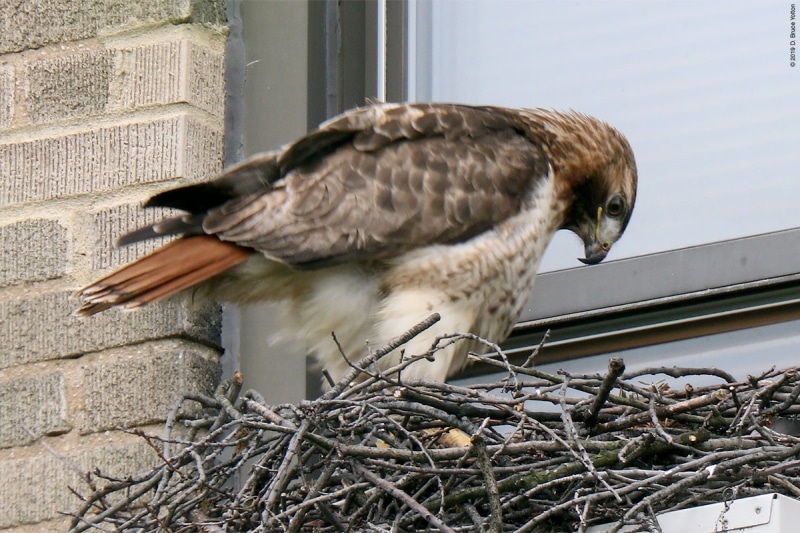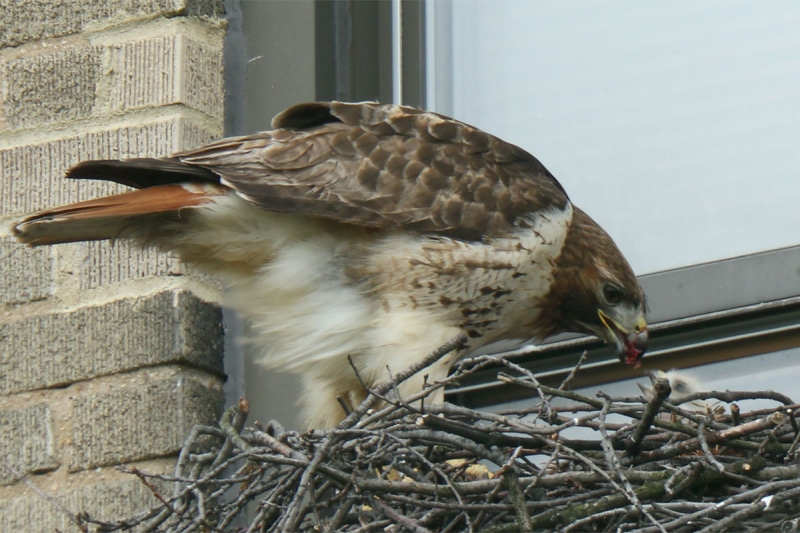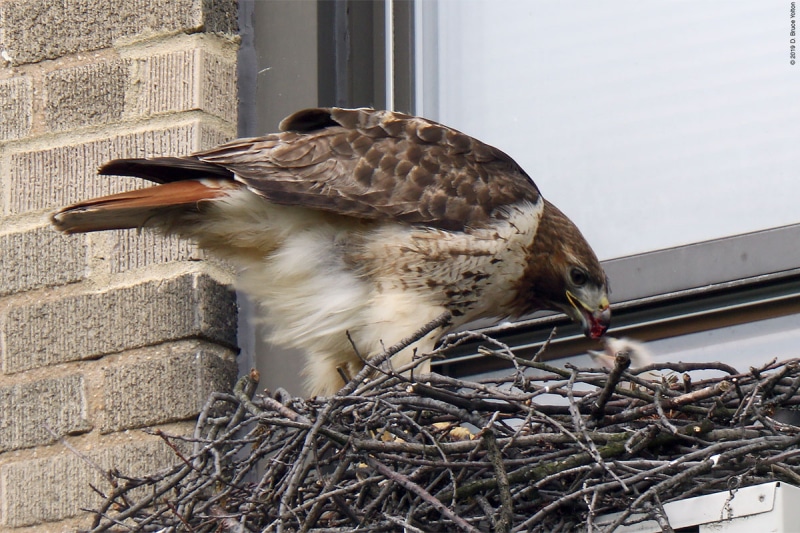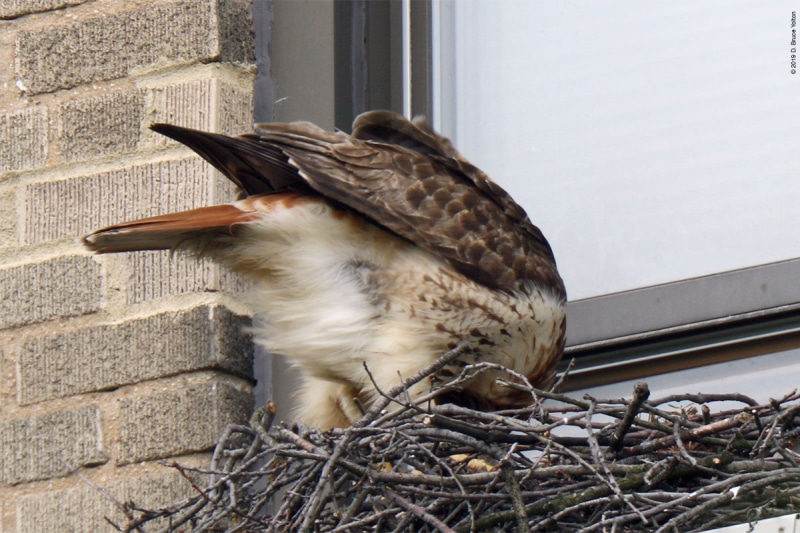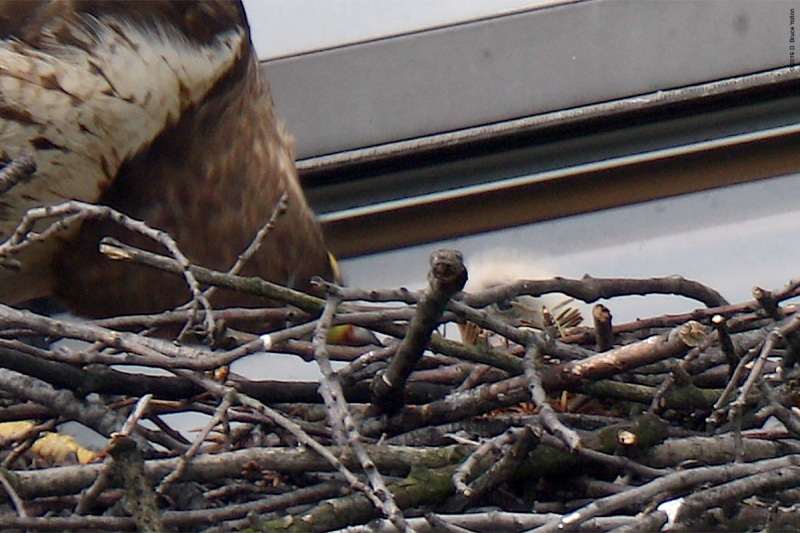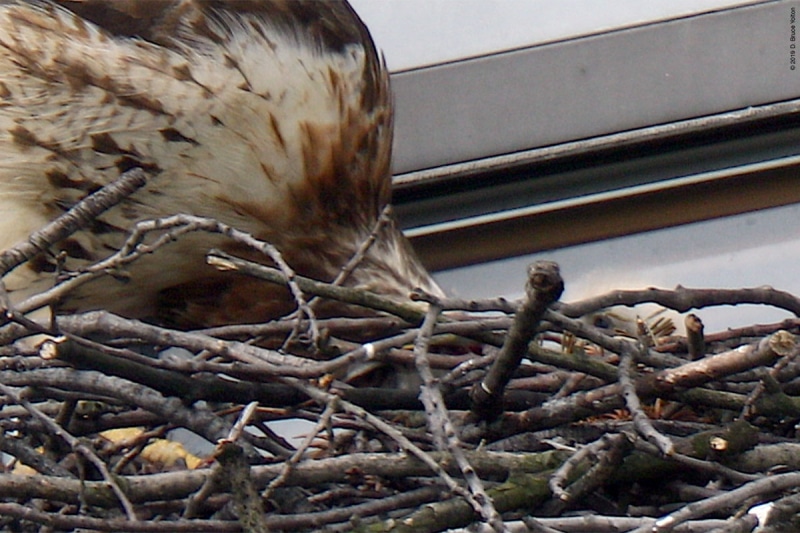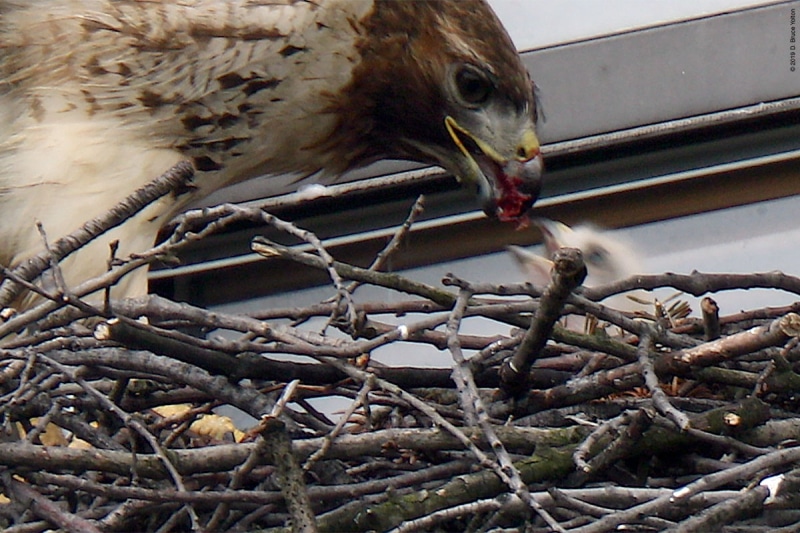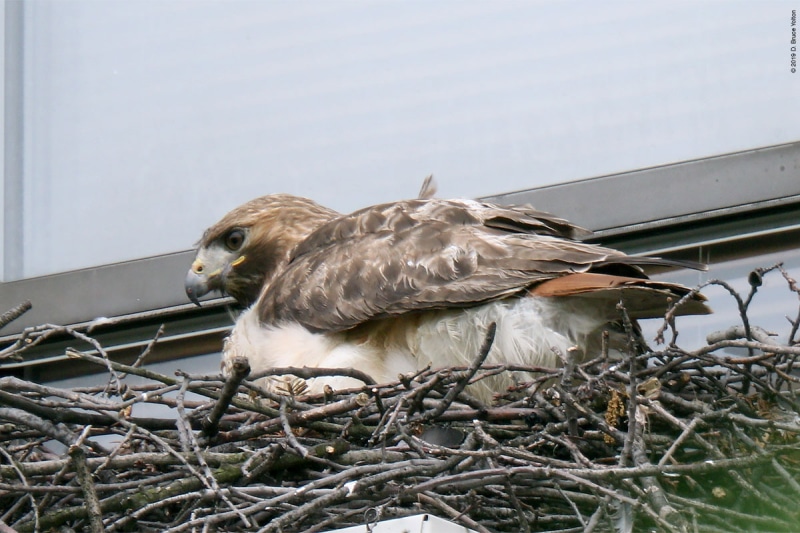350 Central Park West Reboot
The hawk nest at 350 Central Park West has had a hard time. In 2018, the male died during the incubation period and while the female tried she could not incubate alone. In 2019, after about two weeks, the eyasses (baby hawks) died on the nest and the female died a few weeks later.
Over this last year, the nest was removed during façade work on the building.
So, it’s been a wonderful surprise that in under two weeks, the nest has been rebuilt. If this nest wasn’t so well watched, you might never know that the nest is new and both hawks aren’t the originals.
On Wednesday and Thursday, I got to see a lot of the hawks. Early in the day or late in the day is best to catch up with them. I saw them on the nest, bringing twigs, copulating and hunting.
But what I didn’t expect was what we got to see late on Thursday. The male when from the nest to the 96th Street transverse road. He would go about 100 feet, stopping mostly on streetlights. He got to Fifth Avenue and 97th and did something I never would have expected. He flew to Madison Avenue, then went south to 95th stopping first at 96th, before flying west back to the park. What an urban hawk!
If you’re trying to learn who is who, take a look at them copulating. There are lots of field marks if you look closely.
Let’s hope “third time’s a charm” for this nest. It would be nice to see at least one year work out well for this nest.
































































